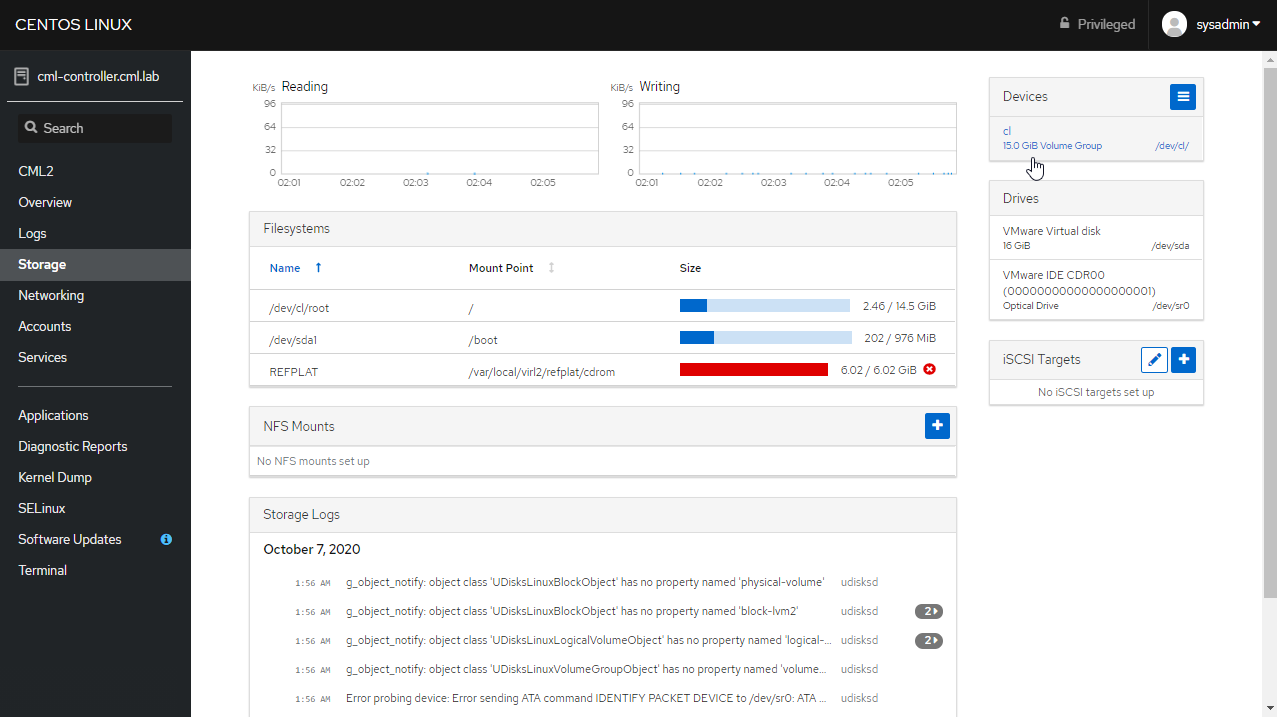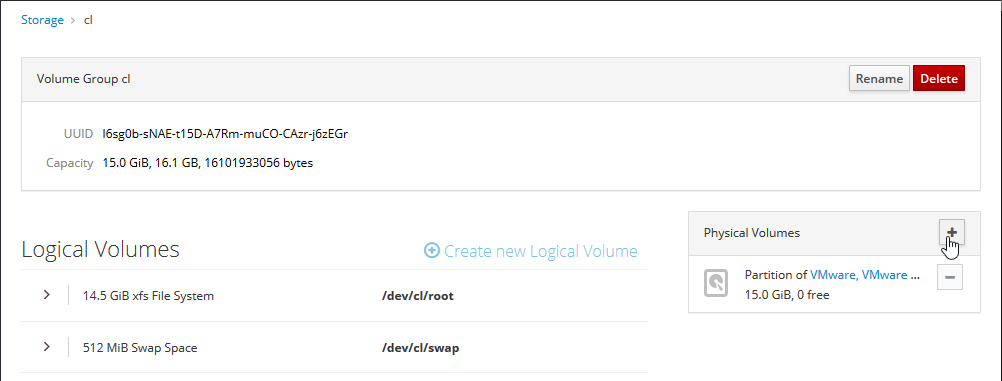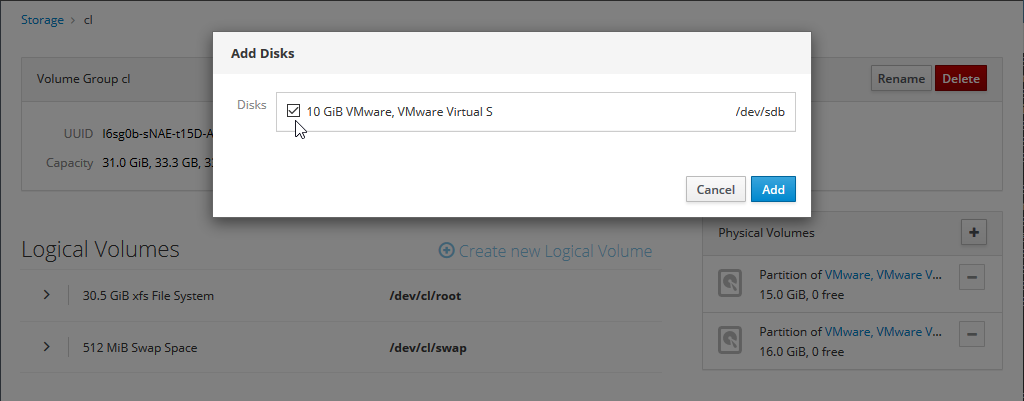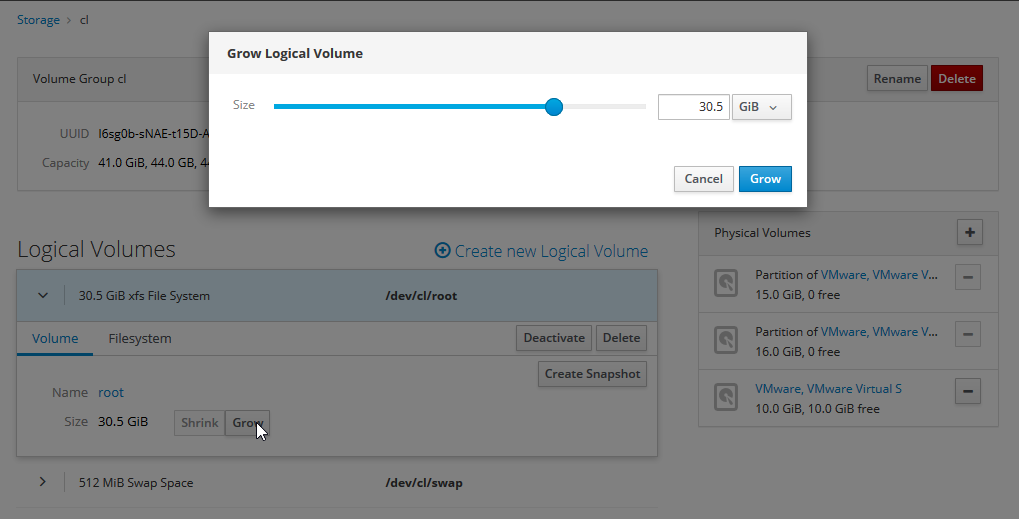- Overview
- Product Documentation
- CML Release Notes
- Getting Started
- CML 2.1 User Guide
- CML User's Guide
- Overview of CML 2.x
- Using CML and the HTML5 UI
- Dashboard
- Workbench
- Adding Nodes to a Lab
- Starting, Stopping, and Wiping Nodes
- Deleting Nodes
- Creating Links
- Rules for Creating Links and Interface Overprovisioning
- Adding Interfaces and Overprovisioning
- Overprovisioning Interfaces with Link Creation
- Starting Simulations
- Connecting to a Node's Console
- Setting CPU limit on node
- Launch sequencing and CPU limiting
- Stopping Simulations
- External Connectivity for Simulations
- Link Packet Capture
- Breakout Tool
- Custom VM Images
- Creating a New Node Definition
- CML 2.1 Admin Guide
- Resources
Method 1 - Adding a Second Virtual Disk (.vmdk)¶
Adding a second virtual disk (.vmdk) requires that a new virtual device (HDD) has already been added to the CML server by editing the virtual machine’s settings using an ESXi web interface (vSphere, vCenter, etc.).
To avoid disrupting network simulations, stop all simulations prior to adding a second virtual disk.
Procedure
Log into the System Administration Cockpit as the system administrator account. See Logging into the System Administration Cockpit.
Click Storage in the navigation bar on the left side of the page.
Edit Volume Group. In the Volume Groups box, click the cl volume.

Selecting the volume group on the Storage page¶
- Add Physical Volume. In the Physical Volumes box, click the + button to
add a new virtual hard disk.

Adding a physical volume to the cl volume group¶
- Select Disk. Select the new virtual disk and click Add. Note: the new
disk will be marked as
/dev/sdbor higher.

Add Disks dialog¶
Grow Logical Volume. Expand the Logical Volumes area and click Grow.
The Grow Logical Volume pop-up dialog is shown.
Grow Logical Volume Dialog. Use the slider to increase the disk size to the desired amount; then click the Grow button in the dialog.

Grow Logical Volume dialog¶
The Logical Volumes area should now report the new total size. The new disk size is also shown in the Dashboard.